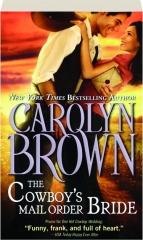(a) Reading results
We received twelve bumble-bee (Bombus terrestris dalmatinus) territories, for every which has had 3140 workers, of Koppert Physiological Systems (Berkel en Rodenrijs, The netherlands). Every specialists were uniquely noted to the thorax that have numbered, colored tags (Opalith labels; Religious Graze Kilogram, Germany). That it anticipate visitors to end up being truthfully known both in research learning studies and you will job foraging samples.
The fresh bees was pre-taught to forage away from 20 bicoloured, blue and you can red-colored, artificial plant life for the a laboratory airline stadium. Brand new rectangular, bicoloured plants were made of one or two halves (for every single 12?24 mm): one red-colored (Perspex Reddish 260) and the other blue (Perspex Blue 727). Throughout the pre-studies, all bicoloured herbs were compensated with 50% (w/w) sucrose provider getting before along with-unsuspecting bees with the same chance to member both colour which have prize (Raine mais aussi al. 2006b). Bees doing no less than five consecutive foraging bouts toward bicoloured flowers was in fact chosen for knowledge. This type of foragers had been educated really, from inside the a trip stadium with ten bluish (Perspex Bluish 727) and ten red (Perspex Purple 260) artificial plants (for each 24?24 mm). Reddish vegetation had been rewarding (for every contained 15 ?l out of fifty% (w/w) sucrose solution), if you are blue plants was indeed blank (unrewarding). Bees was basically considered to be going for a flower after they both contacted (inspected) otherwise landed in it. Getting towards the a flower did not always end in a serving (probing) enjoy. For this reason, before probing a rewarding (yellow) rose, bees you will definitely favor both red-colored/rewarding otherwise blue/unrewarding plants because of the dealing with otherwise getting in it (instead of probing). Opting for a yellow (rewarding) flower try regarded as correct’, if you find yourself choosing a bluish (unrewarding) rose are deemed are a keen error’. I filed the possibility sequence created by for each bee on the date it first inserted new airline stadium. Recording new flower options for each bee stopped immediately after it had produced 99 flower solutions after the very first time it probed a great fulfilling (yellow) flower (Raine et al. 2006b). Ergo, each bee generated at the very least 100 flower selection, for instance the very first time it probed an advisable rose, together with people options created before that it first probing knowledge.
Plant life was altered as well as their ranking re also-randomized anywhere between foraging bouts to avoid bees using scent scratching or earlier in the day rose ranking given that predictors regarding prize. Rose colours were selected in order that bees needed to beat their solid, unlearned taste for bluish, ahead of accompanying certainly the innately minimum preferred colours (yellow) having award (Chittka ainsi que al. 2004; Raine ainsi que al. 2006a). Fifteen bees was indeed coached out-of for each colony (we.age. 180 bees in total) anywhere between cuatro and you will . Thorax thickness measurements were pulled for each and every of those bees given that a way of measuring body size. Controlled lighting getting lab experiments is actually provided by large-volume neon lighting (TMS 24F lights with cuatro.step 3 kHz ballasts (Philips, Holland) fitting that have Activa daylight tubes (Osram, Germany)) so you can imitate natural daylight over the bee flicker fusion regularity.
(b) Discovering curves
The starting point for each bee’s learning curve was the proportion of errors made (blue flowers chosen) before the Sri Lanka kvinner bee first probed a rewarding (yellow) flower. For bees making fewer than five flower choices (either by approaching or landing on them) before probing a rewarding flower (n=53), we used the colony mean proportion of errors (calculated from bees making five or more such choices). Flower choices made by each bee after (and including) the first time it probed a rewarding (yellow) flower were evaluated as the number of errors (blue flowers chosen) in each group of 10 choices. Learning curves (first-order exponential decay functions: y=y0+Ae ?x/t ) were fitted to these 11 data points (i.e. the start pointing and subsequent 10 groups of 10 flower choices) for each individual bee, using Microcal Origin (Chittka et al. 2004; Raine et al. 2006b), to capture the dynamic nature of the learning process. Here, x is the number of flower choices the bee made, starting with the first time it probed a yellow flower, and y is the number of errors. The saturation performance level (y0) is the number of errors made by a bee after finishing the learning process, i.e. when reaching a performance plateau. The decay constant (t) is a measure of learning speed: high values of t correspond to slow learning, whereas lower t values indicate faster learners. A is the curve amplitude: the maximum displacement (height) of the curve above y0. Both amplitude (A) and saturation performance (y0) were constrained between 0 and 10 for curve fitting. Eight (out of 180) bees showed no appreciable improvement in performance during the task, and the software generated learning curves’ that were essentially horizontal lines. These bees were excluded from subsequent analyses because their t values were either very high (>400) or negative.


